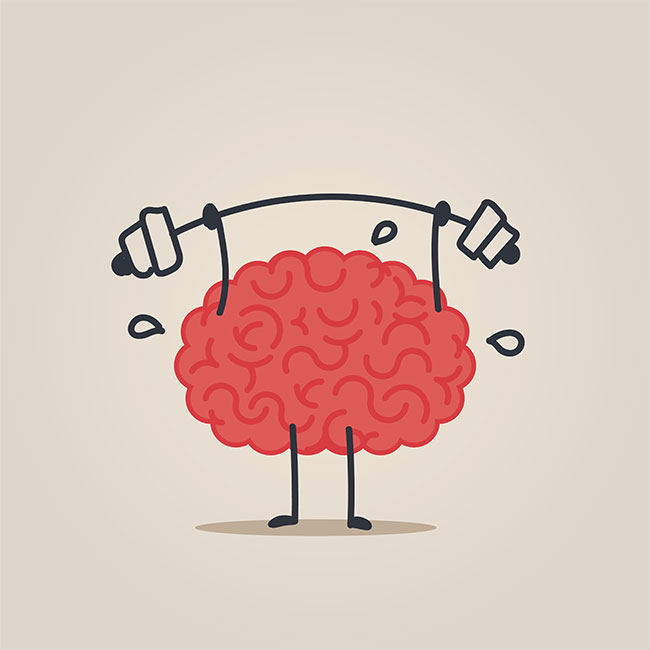
Tools of the Trade: Your brain and aging into retirement
By Sean Kingswell
Features firefighter retirement Sean Kingswell Photo: baluchis/Adobe Stock
Photo: baluchis/Adobe Stock Fire fighting can be a grueling yet rewarding career. Those who are lucky enough to call it their job are passionate about what they do and want to enjoy the stage that follows: retirement. Retirement can mean many different things but common wants include good health, quality of life and longevity. All three of these ideas are tied to how we take care of ourselves and come with good planning and preparation over hope. Firefighters can have a propensity for challenges later in life due to disease potential, work related injuries or critical incident stressors. We, like any other part of society, also risk the natural changes that occur as we age. All of the aforementioned have the potential to be positively impacted with strategies. Transitioning to retirement takes foresight and the groundwork can be laid in advance in all categories of life.
One element of health that is tied to the desired outcomes of aging is maintaining our cognition. As a certified senior fitness trainer, certified brain health trainer and certified Fitminds coach, I have learned the amazing ability of our brain’s neuroplasticity. The use it or lose idiom is literal when applied to our cognition as our brain will actually prune dendrites that we don’t use. The hardware (gray and white matter) and software (circuitry) within the brain can be improved and maintained, which is in turn crucial in preventing neurodegeneration.
To support the brain and impact our trajectory while aging, we need to have a global approach. This means that all of the areas of the brain should be worked and strengthened. This includes the frontal, temporal, occipital and parietal lobe, the cerebellum and so on. They all can be addressed and often impact each other. It can be challenging to assess the global use of our brain. For example, many people may feel their brain is supported or strengthened because they read. Reading is great for the brain… but it is only working a certain area not the different lobes or cognitive domains. We want to make sure that all the domains are exercised including executive function, memory, attention and processing speed. Although not practical to outline in this article there are numerous sub domains within each.
Our brain is a dynamic organ, not static. It is like our blood pressure not our height, meaning also that it can be affected by the things we do. Ironically areas that support our blood pressure are also great for our brains. Good sleep, stress management, nutrition, and exercise are all important for both. Socializing is a fundamental contributor to brain health. Fire fighting is generally a very social career, potentially off the job but certainly on. When we retire do we have a plan in place to make sure we are spending time with people at a reasonable level? The big three for quality of life in retirement are health, purpose and relationships, all of which are impacted by cognition, yet also have a direct bearing on it.
Exercise can be used generally and specifically to help with having an adequate cognitive reserve and benefiting from the fluidity and flexibility of our brains. Exercise in general improves neural efficiency, gray matter and brain activity. Cardiovascular training of course strengthens our heart but also has an impact on the brain. Resistance training is fundamental for aging. We must offset muscle losses and the biggest element for independent living long term is leg strength. Resistance training is also generally good for the brain as it requires motor learning, planning and sustained attention. Balance training helps with fall and injury prevention as we transition from retired to elderly. Frequency (how often) is a more important area of focus then duration (workout length) when it comes to exercise.
Specifically, exercising with the proper techniques can challenge your brain at a level and specificity to meet your current needs and future goals. A well-rounded approach would cover the different domains and outline your strengths and weaknesses. Programs of this nature need to be both novel and variable and are therefore engaging and fun. Dual tasking is a strategy that can be very useful in working the brain. Varied stimulus reaction time drills, memory work, choreography, language tasks, digit spans, task switching, space retrieval, movement flows, obstacles and multi component work are all examples of physical brain health training. The vision, vestibular and proprioception systems should all be worked also. Vision is highest on the neural hierarchy and all three work in tandem.
The brain can also strengthen through direct cognitive stimulation without exercise. This can be great for critical thinking, spatial orientation, language, computation and more. This needs to be done with the proper techniques to be holistically effective. We are so often drilled by the importance of strengthening our bodies and preventing their decline. Our brains deserve and benefit from workouts just the same. Neither should be neglected as a healthy brain later in life is a blessing beyond words.
Sean has been a professional firefighter and personal trainer/wellness coach for 22 years. With many areas of specialty, he has had the privilege of helping countless individuals meet their goals. www.peakconditioning.ca
Print this page